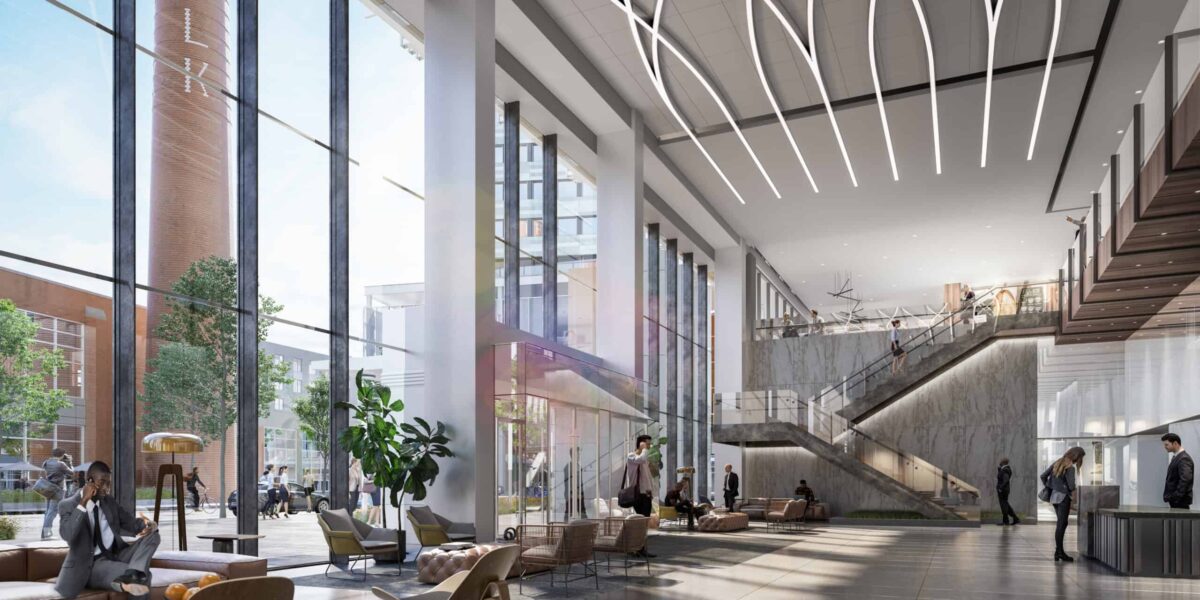In recent years, a boom in medical research has driven incredible growth in the biotech industry and created a heightened demand for life science real estate space. Even throughout the COVID-19 pandemic, when real estate and many other industries have been hit hard, life science space has remained in strong demand.
We recently sat down with Neoscape Chief Creative Officer Rodrigo Lopez to discuss this expanding real estate submarket and the opportunities and challenges that come with life science real estate marketing.
What Do Life Science Companies Want?
With any real estate project, potential tenants tend to care about two things: What’s going on in the building (infrastructure, space, amenities, etc.) and what’s happening around it (transportation, restaurants, etc.). Life science companies are no different. What is different, is what these companies tend to prioritize within these two focus areas.
The physical infrastructure, footprint, and capabilities of a building are undoubtedly important to life science users. And while building features can be strong differentiators for a developer (if they offer space of a certain scale, for example), they are rarely the focus of the story. What tends to create a stronger point of difference is that second piece of the puzzle: what’s happening around the building.
When it comes to location, we’ve found that life science tenants tend to prioritize five things:
- Access to talent
- Access to housing
- Variety of amenities
- Access to transportation options
- Proximity to institutions
The first four points likely don’t come as much of a surprise. All companies want a location that puts them in a position to access and attract top talent. What differentiates life science users is this fifth point: proximity to institutions.
The Cluster Model Is Key
Across the real estate industry, many developers have come to see their competition as the enemy. Neighboring office towers or residential buildings are adversaries to beat out, not to embrace. This is just not the case when it comes to life science marketing.
The success of a life science company is, in fact, highly dependent on its proximity to like-minded institutions, such as universities, medical centers, and, yes, other life science companies. This network of neighboring, interconnected life science players is known as a cluster. Boston’s Kendall Square is widely regarded as the world’s top life science cluster, an area of high rent and high demand due to, not despite, the high concentration of life science companies in the area.
This cluster mentality is crucial to keep in mind when marketing life science real estate. If you’re lucky enough to be located within an existing cluster, your property will practically sell itself with the right branding. But if you’re not, there’s work to be done to play up unique attributes of the building, other benefits of the location, or the perks of pioneering a new cluster.
Look Beyond the Bench
While clusters are a great asset to the companies that operate within them, they present a unique challenge for marketers. With such a high level of saturation within a single market, finding uniqueness for a client’s property can be difficult. Work within the industry for any length of time, and you’ll begin to see the same life science language and buzzwords pop up time and time again. The challenge then becomes how to differentiate.
We’ve learned that you have to take the conversation beyond the science component and find a way to humanize the work being done. More often than not, you can do so by focusing on aspects of the property that exist outside of the lab and embracing benefits that enhance quality of life for tenants and their employees. Sometimes it’s the neighborhood, sometimes it’s the developer itself — it’s all about finding that small kernel that actually makes the project unique.
Our experience across real estate has served us well in branding life science real estate. By borrowing from other areas of real estate that tend to focus more on the individual, such as hospitality and residential, we’ve been able to better tap into narratives that help drive decision-making on a more personal level.
Opportunities in Life Science Marketing
While life science real estate marketing comes with its own unique set of challenges and considerations, the purpose-driven nature of the work keeps us coming back time and time again. With any life science project, there is always the opportunity to tell a bigger story – one with an end goal that goes beyond monetary incentives. The work we do helps create a home for companies that are truly making a difference in the world, and it’s a purpose we are proud to be a part of.





